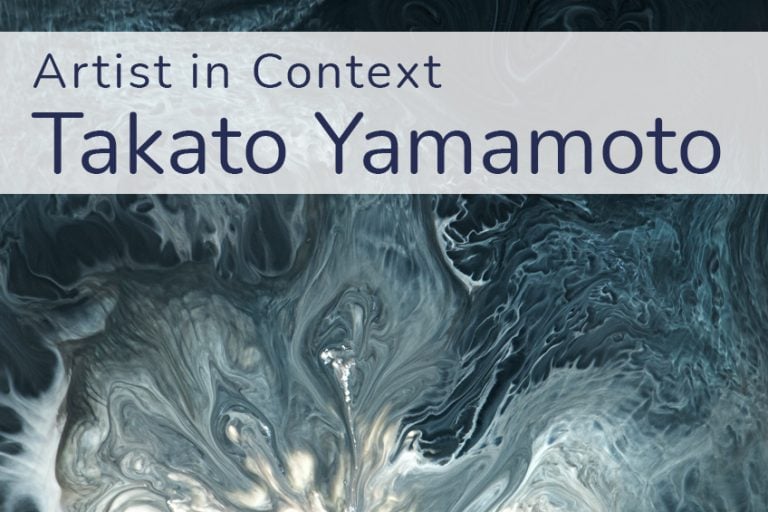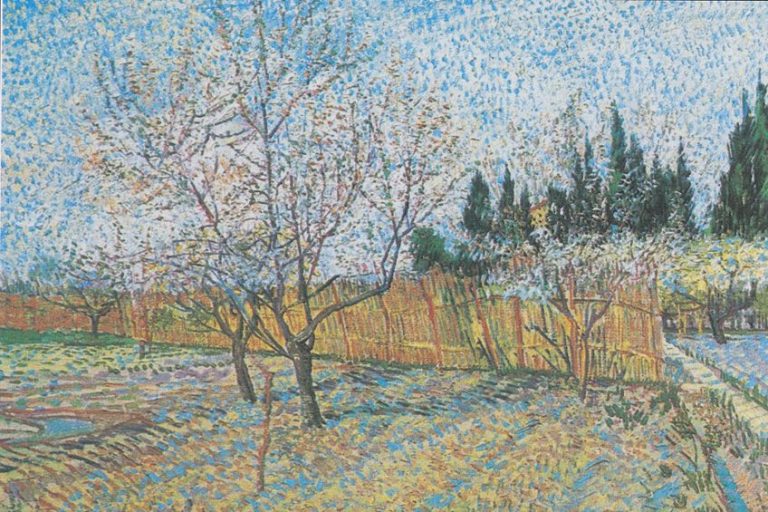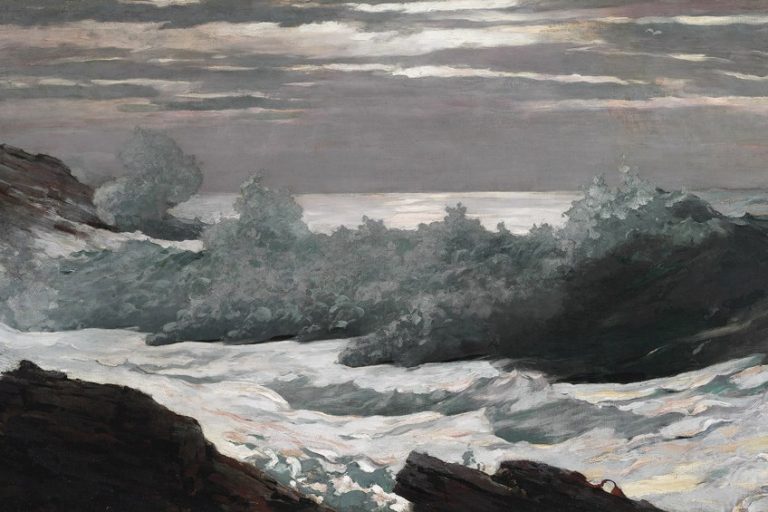Alexander Rodchenko – A Key Figure in Russian Constructivism
Alexander Rodchenko, a pioneering figure in the realm of avant-garde art, reshaped the visual landscape of 20th-century Russia with his innovative approach to photography, painting, and design. As a leading proponent of Constructivism, Rodchenko’s work epitomized the fusion of art and technology, advocating for art’s active role in shaping social and political ideologies. Through his radical compositions, dynamic use of geometric forms, and groundbreaking experiments with perspective, Rodchenko not only challenged traditional artistic conventions but also laid the foundation for modern visual communication and design.
Table of Contents
- 1 Key Takeaways
- 2 Early Life and Education
- 3 Artistic Innovations and Philosophy
- 4 Contribution to Soviet Art and Propaganda
- 5 Accomplishments
- 6 Late Years and Death
- 7 Influence of Rodchenko’s Art
- 8 The Legacy of Alexander Rodchenko
- 9 Frequently Asked Questions
- 9.1 What Is Considered Alexander Rodchenko’s Most Influential Contribution to the Art World?
- 9.2 How Did Alexander Rodchenko’s Work Influence the Constructivist Movement?
- 9.3 What Techniques Defined Alexander Rodchenko’s Photography Style?
- 9.4 After Abandoning Painting, What Mediums Did Alexander Rodchenko Focus On?
Key Takeaways
- Rodchenko was a versatile artist whose work in painting, graphic design, and photography aligned with constructivist values.
- His art was deeply influenced by the Russian Revolution and aimed to serve practical purposes in the socialist state.
- Through his visual innovations, Rodchenko made lasting contributions to Soviet propaganda and shaped the aesthetic of a political era.
Early Life and Education
| Birth | December 5, 1891 |
| Death | December 3, 1956 |
| Place of Birth | St. Petersburg, Russia |
| Genre of Work | Photography, graphic design, and Constructivism |
Alexander Rodchenko emerged as a pivotal figure in the Russian avant-garde movement during the early 20th century. His multifaceted contributions spanned painting, graphic design, photography, and sculpture. Born in 1891, Rodchenko was active during a period marked by the Russian Revolution, which played a significant role in shaping his approach to art and politics. He was widely recognized for his innovative work in the constructivist movement—a major artistic and architectural philosophy that came out of the Russian Revolution. Rodchenko’s commitment to this ideological and aesthetic framework was evident in his abstract yet functional approach to art.
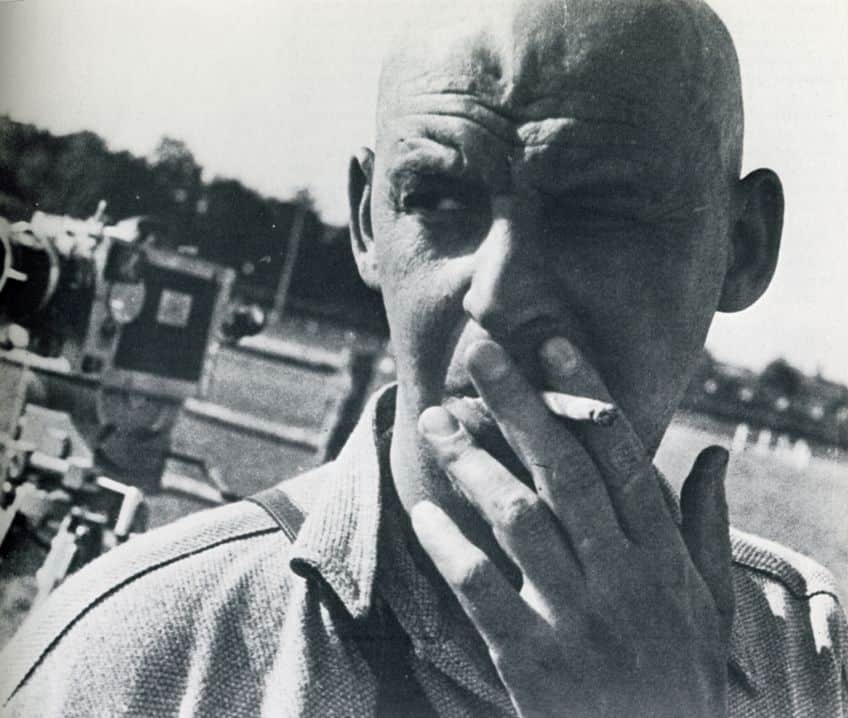
Rodchenko’s artistic innovations and philosophy were integrally connected to the political and social context of his time. He endeavored to make art that not only broke from tradition but also served a practical purpose in the socialist society. His work in various mediums, notably graphic design and photography, was characterized by bold lines, dynamic angles, and a sense of movement that reflected the mechanization and industrial progress of the era. Rodchenko’s contributions to Soviet art and propaganda were significant; his designs for posters, books, and advertisements had a profound impact on the visual language of the Soviet Union, promoting the ideals of communism through a striking and accessible aesthetic.
Artistic Beginnings
Born on December 5, 1891, in St. Petersburg, Russia, Alexander Rodchenko began his artistic training in Kazan. In 1910, he enrolled at the Kazan School of Art where he was tutored by Nicolai Fechin and Georgii Medvedev. He quickly excelled, displaying an innate understanding of academic artistic principles.
This period was marked by his intensive engagement with formal artistic techniques, although his later work would break significantly from tradition.
Influence of the Russian Revolution
The Russian Revolution of 1917 served as a pivotal moment in Rodchenko’s life, intersecting with his educational years. The socio-political environment provided a fertile ground for his beliefs about art’s role in society. He viewed the revolution as an opportunity to radically reform the way art interacted with the everyday life of citizens, aligning his ideologies with the tenets of the Constructivist movement that sought to abolish the traditional artistic concern with composition and replace it with ‘construction.’

Association With Kazimir Malevich
While never a student of Kazimir Malevich, Rodchenko was deeply influenced by Malevich’s work and ideas. Malevich’s prominence in the Russian avant-garde and his development of Suprematism, which focused on basic geometric forms and a limited range of colors, created a context that informed Rodchenko’s later experiments in abstraction.
These influences were consolidated during Rodchenko’s time at Vkhutemas, a state art and technical school where he absorbed and re-interpreted these avant-garde principles into his own practice.
Artistic Innovations and Philosophy
Alexander Rodchenko’s contributions to art were deeply intertwined with the philosophies of Constructivism. He was a pioneer not only in the visual aspects of this movement but also in how the concepts of space, line, and form could be disrupted in photography, abstract works, and graphic design, thereby redefining the painterly aesthetic of his time.

Constructivist Movement
Rodchenko was a seminal figure in the Constructivist movement, characterized by an emphasis on material properties, texture, and construction. Constructivism rejected the idea of autonomous art in favor of art as a practice directed towards social purposes.
As a Productivist, he believed that the artist could contribute to the creation of a new environment, mirroring the industrial world through geometric abstraction and use of new materials.
Photography and Form
As a photographer, Rodchenko challenged perspectives by capturing unique angles and employing bold lines and contrasts, which transformed the viewer’s perception of form and space. He explored abstract visuals in his photography, bending the traditional representations of subjects into a novel, modern context.
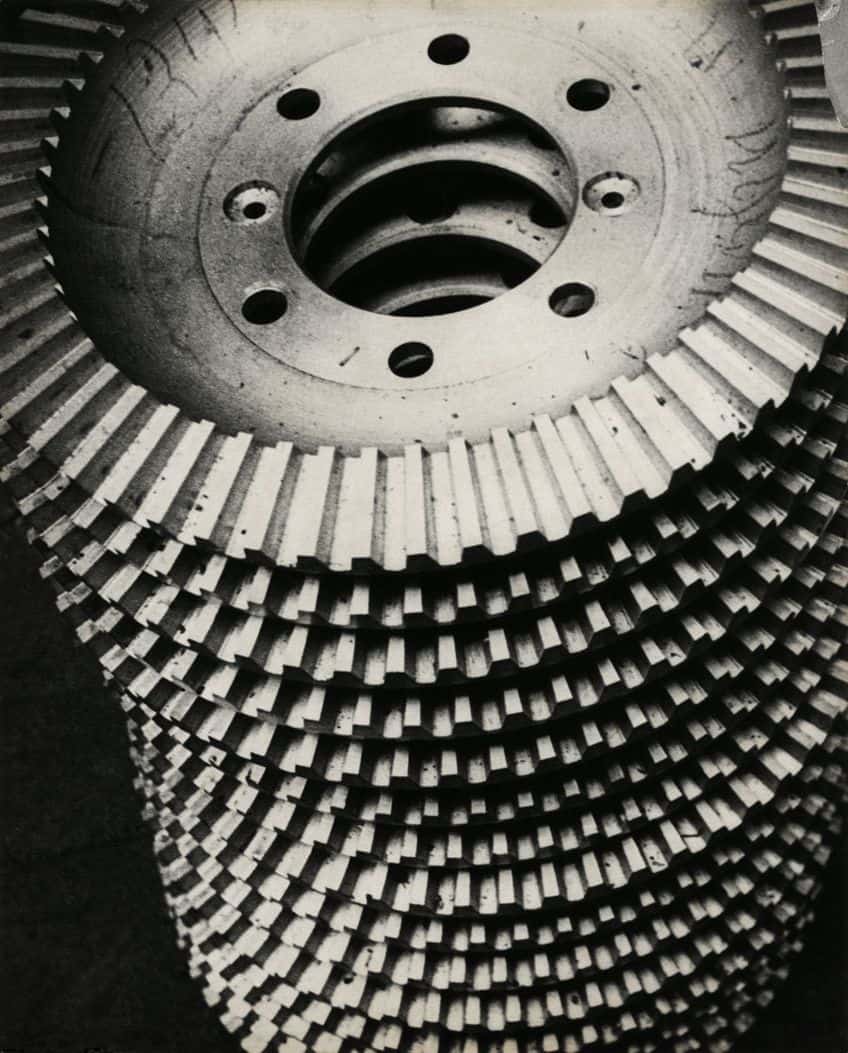
Abstract Works
Rodchenko’s abstract works, particularly his series of Black on Black paintings, were a response to, and a development of, the non-objective art movement. These works were characterized by the use of simple geometric shapes and a limited color palette, which focused attention on the flatness of the painting surface and the construction of the picture plane.
His exploration of abstraction was not solely for aesthetic innovation but also communicated his philosophical quest for the essential, utilitarian purpose of art.
Graphic Design Impact
Rodchenko’s graphic design was marked by the use of photomontage, bold typeface, and clear visual language that conveyed messages powerfully and directly. His designs were heavily functional, often serving as propaganda for the post-revolutionary Russian state, and they left a lasting impact on both the Constructivist movement and modern graphic design practices. His approach to design as a communicator of ideas remained integral to his innovative artistry.

Contribution to Soviet Art and Propaganda
Alexander Rodchenko’s work is a cornerstone of Soviet visual culture, intertwining bold artistic innovation with potent political messages. His contribution to Soviet art and propaganda reshaped the visual language of the time.
He was responsible for reinforcing the values and aims of the new Socialist state.
Collaboration With Varvara Stepanova
Alexander Rodchenko and his wife Varvara Stepanova, herself a prominent artist, were closely associated with the Productivist Group within Russian Constructivism, which aimed to apply art to everyday life. Together, they undertook numerous creative ventures which often featured utilitarian art serving the Bolshevik Government’s propaganda needs. Their partnership was significant, particularly in the context of propaganda, as they combined their talents to create art that was not only revolutionary in form but also in function.

Work for Soviet Institutions
Rodchenko’s practice was deeply affiliated with Soviet institutions, including the Department for Fine Arts (IZO) of the People’s Commissariat for Enlightenment (Narkompros). He designed interiors, workers’ clubs, and contributed to advertising, promoting Socialist Realism and the benefits of socialist society.
His role in various institutional projects connected him with multiple facets of Soviet life, from education to leisure, emphasizing the collective over the individual.
Poster and Book Design
Posters and book design were Rodchenko’s primary mediums for conveying state-sponsored messages. He worked with the LEF (Left Front of the Arts) magazine to push forward the agenda of leftist artists and writers. He was also involved with the Lengiz Publishing House, where he designed book covers that were mass-produced, serving as everyday reminders of the Soviet ideologies. Rodchenko’s work in poster design, particularly, was characterized by dynamic compositions, geometric abstraction, and a sharp use of photomontage that aimed at educating and mobilizing the populace.

Accomplishments
Alexander Rodchenko was a trailblazer in the Russian avant-garde movement, primarily known for his pivotal role in Constructivism. His multifaceted portfolio heralded significant progress in various art forms. Notable among his contributions are:
- Photography: Rodchenko revolutionized photography through novel angles and perspectives, promoting the concept of foreshortening.
- Graphic design: He excelled in poster art, book covers, and advertising. His design work was marked by geometric simplicity and vibrant colors.
- Painting: Though lesser-known for his paintings, Rodchenko was adept at creating visually compelling compositions that broke artistic conventions of the time.
Rodchenko’s work was not merely artistic but also served as a vehicle for political expression in the post-revolutionary Soviet Union. His collaboration with publications and organizations disseminated the ideals of the regime, reflecting his belief in art as a tool for societal change.
His lasting impact is evident in his influence on future generations of artists and designers, establishing him as a central figure in early 20th-century modern art.
Late Years and Death
During the mid-1930s, Alexander Rodchenko experienced a significant shift in his career. Once a heralded figure of the avant-garde movement, he saw his innovative work fall out of favor as the political climate in the Soviet Union transformed under Joseph Stalin’s rule. By the late 1930s, Rodchenko returned to painting, his earlier explorations in photography diminishing. After ceasing to photograph in 1942, he shifted towards creating abstract expressionist works throughout the 1940s.

Despite the state’s suppression of the avant-garde aesthetic, which was at odds with the government’s preferred social realism, Rodchenko and his artist wife, Varvara Stepanova, were not among the victims of Stalin’s Great Purges that decimated much of the Soviet intellectual and artistic community.
Rodchenko remained involved in the organization of photography exhibitions for the government, even as his personal artistic endeavors were facing obstructions. This work continued to be a part of his life even through the challenges posed by the political environment. Alexander Rodchenko passed away on December 3, 1956, in Moscow.
His death marked the end of a profound chapter in Russian art, closing the life of a man whose contributions extended from constructivism to photography and graphic design, and who had once placed his art in the service of political revolution.
Influence of Rodchenko’s Art
Alexander Rodchenko’s multifaceted contributions to the realm of art and design extend far beyond his time, significantly impacting modern art, photography, and graphic design. His approach was often analytical, blurring the lines between fine art and visual communication.

Influence on Modern Art
Rodchenko’s art was pivotal in the shift towards abstraction in the early 20th century. His Suprematist compositions, developed in 1915, signaled a departure from traditional figurative painting, influencing the trajectory of Modern Art. His Cubist tendencies, visible in these early works, laid the groundwork for future abstract movements.
The Bauhaus school, although not directly linked to Rodchenko, shared similar ideals in form and function, reinforcing the ethos of artists and designers by integrating Rodchenko’s abstract visual language and utilitarian philosophy.
Photography Technique
Renowned for his Analytical-Documentary Photo Series, Rodchenko revolutionized the field of photography through bold experimentation with angles and composition. His techniques introduced a new visual vocabulary that shifted away from pictorial traditions toward a dynamic, candid perspective. Museums and institutions, even the Museum Bureau and Purchasing Fund, later recognized the merit of his photographic works for their high art value and documentarian importance.

Impact on Graphic Design
Rodchenko’s foray into Graphic Design saw him apply his radical artistic vision to posters, books, and advertising. His use of Photomontages combined disparate elements into cohesive, impactful designs that communicated complex messages simply and effectively.
These innovations greatly influenced the development of visual communication strategies and are considered seminal works in the establishment of graphic design principles still employed.
The Legacy of Alexander Rodchenko
Alexander Rodchenko is celebrated as a pioneering figure in the avant-garde movement of the early 20th century. His contributions spanned various art forms including painting, photography, and graphic design. As a co-founder of Constructivism, he forged a path that melded artistic endeavors with the industrial world, advocating for art to serve a practical purpose in society.
- Artistic influence: Rodchenko’s innovative approach to art influenced the development of Russian design and sculptural practices.
- Photography: He revolutionized photographic composition and technique, promoting a bold, new perspective in visual art.
Coupled with his political engagement, Rodchenko’s legacy is deeply intertwined with the social fabric of the time, reflecting the tumultuous backdrop of the Russian Revolution. His artwork, often characterized by stark geometrical forms and a dynamic sense of movement, represented a break from traditional aesthetics and set the stage for modern graphic design. His role as an instructor at the VKhUTEMAS in Moscow underscored his lasting impact on art education, fostering a new generation of designers and artists.
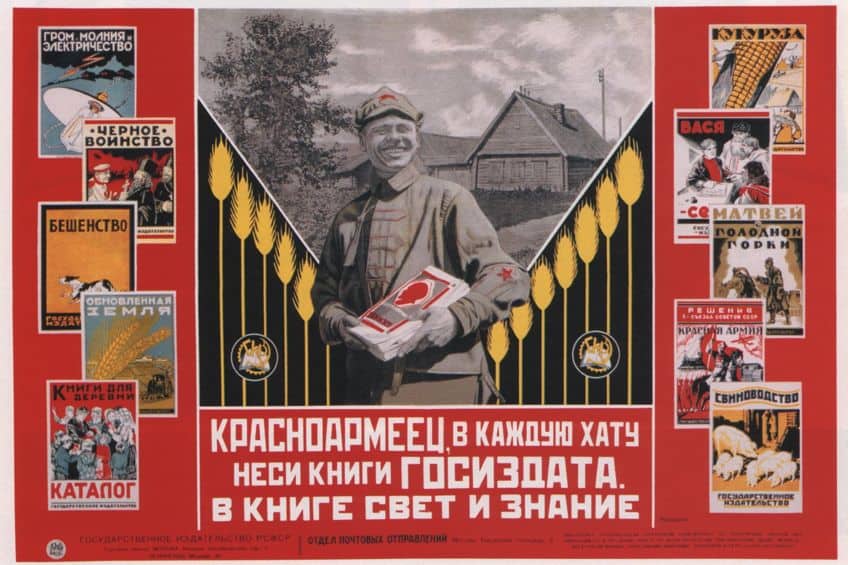
Rodchenko’s work is recognized for its stark simplicity and powerful visual statements, which remain influential to this day. His art is prominently displayed in major institutions like the Museum of Modern Art (MoMA) and The J. Paul Getty Museum, ensuring his continued presence within global artistic discourse. In essence, Rodchenko’s legacy is that of a visionary who redefined artistic practice, challenging conventions and championing a synthesis of art and life.
Alexander Rodchenko’s enduring legacy in the art world resonates through his revolutionary contributions to Constructivism, photography, and design. His bold vision and avant-garde spirit continue to inspire artists and designers worldwide, emphasizing the power of art to provoke thought, challenge norms, and drive social change. Rodchenko’s relentless experimentation and commitment to merging art with everyday life remain a testament to his enduring influence on modern art and design, cementing his place as a visionary whose impact transcends generations.
Frequently Asked Questions
What Is Considered Alexander Rodchenko’s Most Influential Contribution to the Art World?
Alexander Rodchenko is renowned for his revolutionary approach to abstract art, which played a pivotal role in the founding of the Constructivist movement. His exploration of geometric forms and spatial effects has cemented his legacy as a key figure in avant-garde art.
How Did Alexander Rodchenko’s Work Influence the Constructivist Movement?
Rodchenko’s contributions to Constructivism included his utilitarian philosophy towards art, seeing it as a practice for social purposes. This influence promoted art as a collective endeavor that merged with industrial design and architecture, reshaping the Constructivist movement’s aesthetic and philosophical foundations.
What Techniques Defined Alexander Rodchenko’s Photography Style?
He is credited for introducing unconventional perspectives and bold compositions in photography. His techniques included drastic angles, extreme close-ups, and the creative use of lines and spacing, which challenged traditional viewpoints and introduced a new visual language in photography.
After Abandoning Painting, What Mediums Did Alexander Rodchenko Focus On?
After moving away from painting, Rodchenko delved into graphic design, photography, and sculpture. He directed his artistic vision towards creating practical objects and film posters, highlighting his commitment to integrating art and everyday life, and his experimentation with photomontage paved the way for modern graphic design.
Isabella studied at the University of Cape Town in South Africa and graduated with a Bachelor of Arts majoring in English Literature & Language and Psychology. Throughout her undergraduate years, she took Art History as an additional subject and absolutely loved it. Building on from her art history knowledge that began in high school, art has always been a particular area of fascination for her. From learning about artworks previously unknown to her, or sharpening her existing understanding of specific works, the ability to continue learning within this interesting sphere excites her greatly.
Her focal points of interest in art history encompass profiling specific artists and art movements, as it is these areas where she is able to really dig deep into the rich narrative of the art world. Additionally, she particularly enjoys exploring the different artistic styles of the 20th century, as well as the important impact that female artists have had on the development of art history.
Learn more about Isabella Meyer and the Art in Context Team.
Cite this Article
Isabella, Meyer, “Alexander Rodchenko – A Key Figure in Russian Constructivism.” Art in Context. April 24, 2024. URL: https://artincontext.org/alexander-rodchenko/
Meyer, I. (2024, 24 April). Alexander Rodchenko – A Key Figure in Russian Constructivism. Art in Context. https://artincontext.org/alexander-rodchenko/
Meyer, Isabella. “Alexander Rodchenko – A Key Figure in Russian Constructivism.” Art in Context, April 24, 2024. https://artincontext.org/alexander-rodchenko/.



